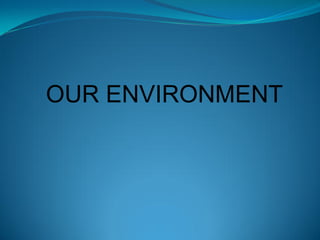Our environment consists of living and non-living components that interact in complex ways. Humans rely on healthy ecosystems, but our activities have disrupted natural cycles and caused pollution. Key issues include climate change from greenhouse gas emissions, which risks a runaway warming effect. While scientists agree human activity contributes to current warming trends, fully predicting climate impacts remains challenging due to its complexity. Maintaining sustainable resource use requires awareness of our footprint on ecological systems.











































